The light Il-112V military transport aircraft is intended for transportation and air landing (a parachute method) of easy samples of arms and military equipment, freights and staff and designed to replace the park of obsolete An-26 aircrafts.
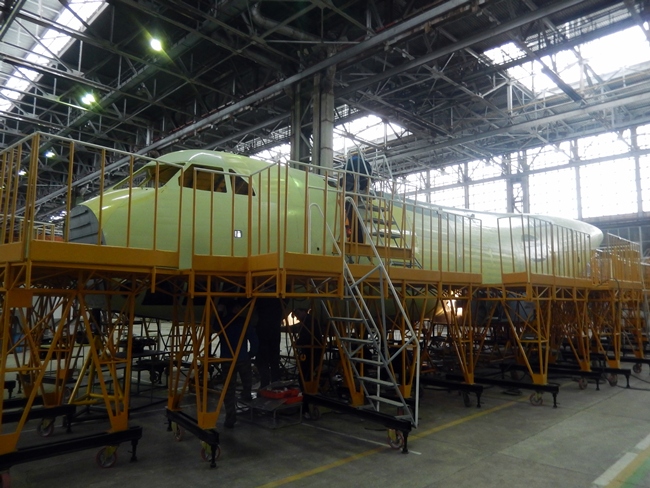
Works are conducted according to the state contract on carrying out the developmental works on creation of the light Il-112V military transport aircraft concluded between the Russian Federation Ministry of Defence and JSC Aviation Complex of S. V. Ilyushin which is a part of the United Aircraft Corporation (UAC). Terms of the contract provide the construction of two prototypes of the aircraft - one for carrying out flight testing and one for carrying out strength testing.
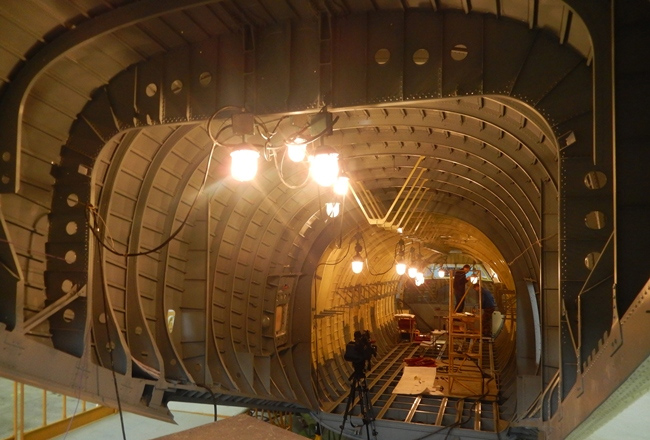
This is the first prototype of Il-112V, which construction is carried out on VASO according to the designer documentation developed by Aviation complex of S. V. Ilyushin. It is expected that the glider of the airplane will be docked by the end of February 2017 (the hinge of the wing and the mounting of the tail), and then the installation of engines, systems and equipment will begin. The first flight of the Il-112V is scheduled for summer 2017.
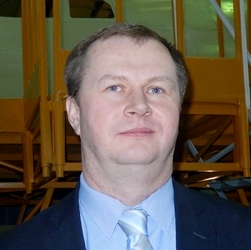
Director of the Il-112 program of Aviation complex of Ilyushin Dmitry Savelyev: «As you see, the dredging from a building berth of the general assembly of the first flight sample Il-112V was made recently to finish extra building slip operations and to transfer it to the final assembly for the mounting of the wing and the beginning of installation of all aircraft systems. Configuration of the aircraft is planned to be finished in February, 2017, then is going to begin mounting of systems and airfield work which will end in May. For the first flight the frequency tests will be carried out - it is a check of natural oscillations of the fuselage and control system, and also force calibration of the first airplane on durabilities to provide the first take-off at the end of June, 2017. Here in Voronezh we plan to make about five flights that then move to Zhukovsky, and there are already going to begin preliminary tests within the coordinated program of flights, with the subsequent transmission in February, 2018 to the state tests.
Here you can see the details and the second aircraft for strength and endurance tests, which will be laid in the vacant berth assembly. This prototype is going to be released in August next year, we will it pass on to the Central Aerohydrodynamics Institute for the tests, which will last until 2020. To enter the mass production it is necessary to conduct the cycle of production and state tests. In general the contract ends in 2020, but we can talk about making the initial batch no earlier than mid-2018. We have made the equipment laid for mass production not only for the prototypes. It is considered to produce from 8 to 12 aircrafts per year».
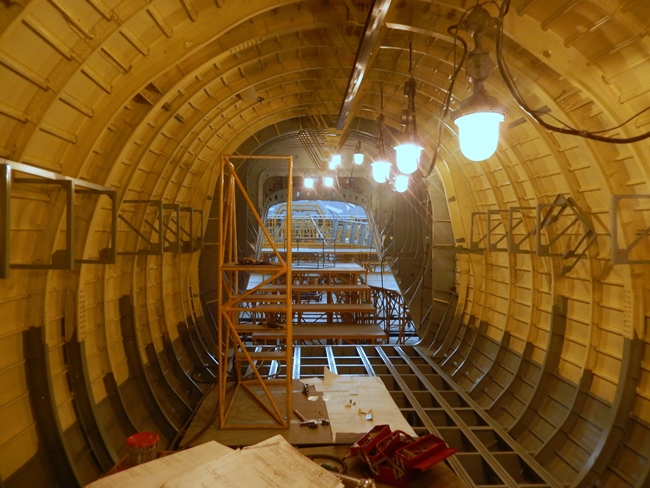
As the military transport aircraft there will be installed hydromechanical control system. The flight and navigation complex meets all modern requirements. Also, the defensive means allowing to protect the aircraft from the ground portable weapons such as Strela and Igla and also the defence of class "air-to-air" missiles will be established. It is rather modern complex called Screen.

Along with works on the fuselage, in the nearby manufacture production of a wing of the first Il-112V comes to the end. The whole top and lower wing panels are put in a building berth, the elements of the power set, wing toe. This is the most interesting and amazing part of the project. For the first time in Russia for transport aircraft is produced a "monowing", instead of two separate consoles, which are usually attached to the centre section. With this structure there is no centre section. The wing is attached to the top edges with two power frames with the help of special brackets and braces.
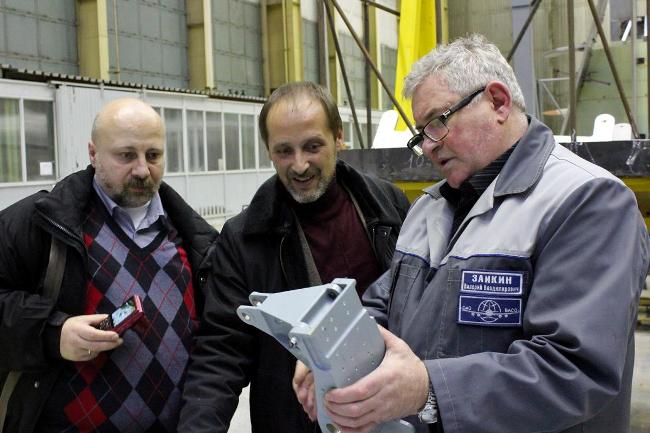
Wing to fuselage attachment element
Parts and components made in Russia are used in the design of Il-112V. Several enterprises are involved in the production cooperation. For example, the Ulyanovsk aircraft building plant Aviastar-SP produces panels of the fuselage, hatches and doors for the Il-112V and the Kazan enterprise KAPO-Composit - the brake flaps, spoilers, fairings rails flaps, trims the elevators and rudders and other parts of composite materials. Since Il-112V is designed in digital, all the details, including received from other companies, were mounted almost perfectly on the first prototype that has surprised a lot of factory workers. Joining of the fuselage of the first prototype took place in the shortest time for the company as possible - two days.
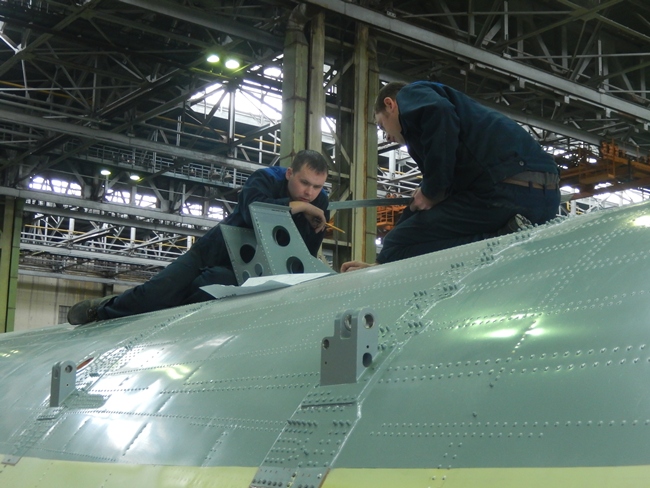
The wing will be fixed on these flame clamps
Working in paperless digital format involves the use of modern electronic information systems. For this purpose at the Voronezh State Technical University was developed a special terminal allowing workers to obtain all necessary information and which equip the assembly sections of the manufacture. In a single information window there is presented all the necessary documentation in electronic form: 3D-models, drawings, interactive documentation of the assembly process. Just 3 button are pressed and the worker receives the documentation on the site, 3D objects, sees the technical process - a sequence of assembly parts. If necessary, the desired image or specification can be printed on the built-in printer terminal.

The touchscreen allows you to rotate the 3D-models and enlarge the object. You looked at technical process, the assembly sketch on the screen, then went to the installation. All terminals are tied into one information centre. If the design changes have been made, it is all recorded in the electronic documentation of each site. This simplifies further operation - dial number of the aircraft and the part number that is out of service, you get all the necessary information. Or if the item after a specific time has to be replaced, the customer will also have a system that will inform about the timing of the operation and provide all necessary information. Automatically sends a request to the technical centre, the plant receives an order for its manufacture. Such production is connected together with a life-cycle management system.
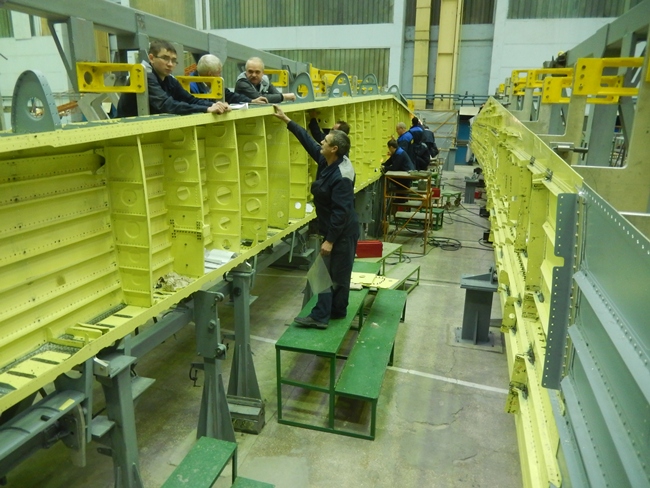
The wing assembly
As sustainer propulsion system of the aircraft two turboprop engines will be used TV7-117ST development of JSC Klimov with capacity of 3 500 hp with propellers development of AV-112 NPGT Aerosilа. At the moment, the first engine is made, which was installed on the test bench in St. Petersburg on September 15. At the moment it passed acceptance tests and now is disassembled for assessing the technical condition. Assembling flight engines will begin in January 2017, to ensure the supply of engines in Voronezh in late February. Hinge of the engines is scheduled for the second half of March.
The TB7-117CT engine at the test bench of JSC Klimov in St. Petersburg
The aviation complex of S. V. Ilyushin considers that signing of the state contract on the supply of mass production Il-112V for the Ministry of Defence of the Russian Federation can take place in 2017. About the intention of the military authorities to enter into this contract was repeatedly declared by the Deputy Minister of Defence of the Russian Federation Yury Borisov. According to his estimates, the need of the military department in the aircrafts of this class makes at least 35 units. The light Il-112V military transport aircraft can be offered for export.
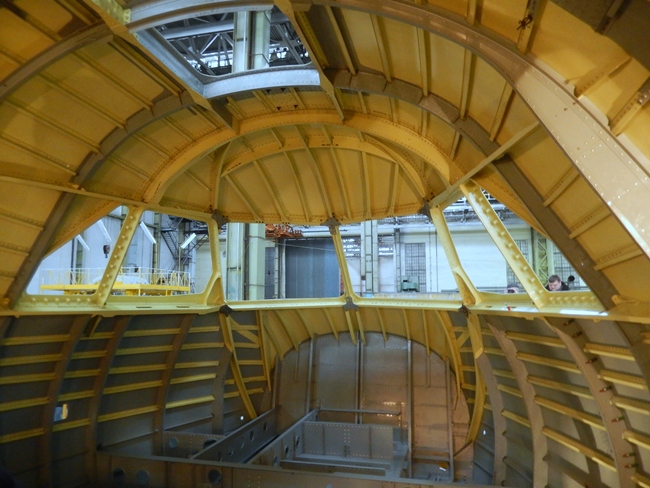
Il-112V has to solve the problems assigned to it in various geographical and climatic conditions, day and night and adverse weather conditions. The aircraft is equipped with modern avionics, providing, in addition to an effective solution of objectives, an automatic approach to categorised airports for a minimum ICAO Category II and manual approach on poorly equipped airfields in terms of the radio engineering.
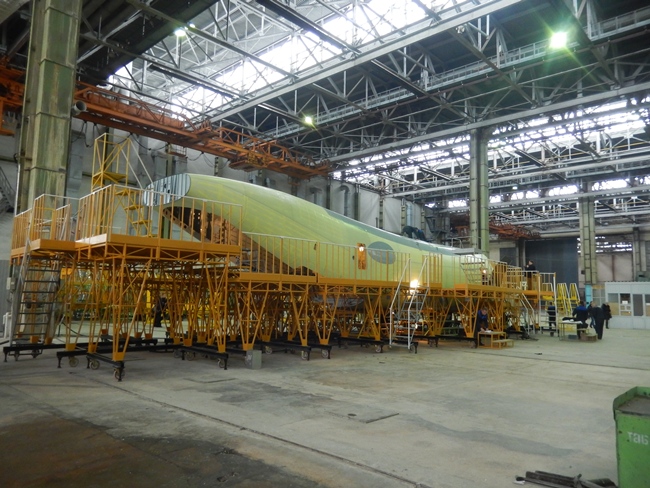
Calculated specifications
|
Geometric characteristics
|
|
|
Length, m.
|
24.15
|
|
Height, m.
|
8.89
|
|
Wingspan, m.
|
27.6
|
|
Wing area (trapezium), m2
|
65
|
|
Diameter of the fuselage, m.
|
3.29
|
|
|
|
|
Characteristics of the power plant
|
|
|
Number x engine type
|
2xHPT
|
|
Engine model
|
TV7-117ST
|
|
Maximum engine power, hp.
|
3500
|
|
|
|
|
Mass Properties
|
|
|
Maximum take-off weight, t.
|
21
|
|
Maximum payload, t.
|
5
|
|
Capacity of the fuel tanks, l.
|
7200
|
|
|
|
|
Aircraft performance
|
|
|
Cruising speed, km / h
|
450-500
|
|
Maximum flight height, m.
|
up to 7600
|
|
Flight range with a payload of 3.5 tons, km.
|
2400
|
|
Required runway length, m.
|
1200
|












